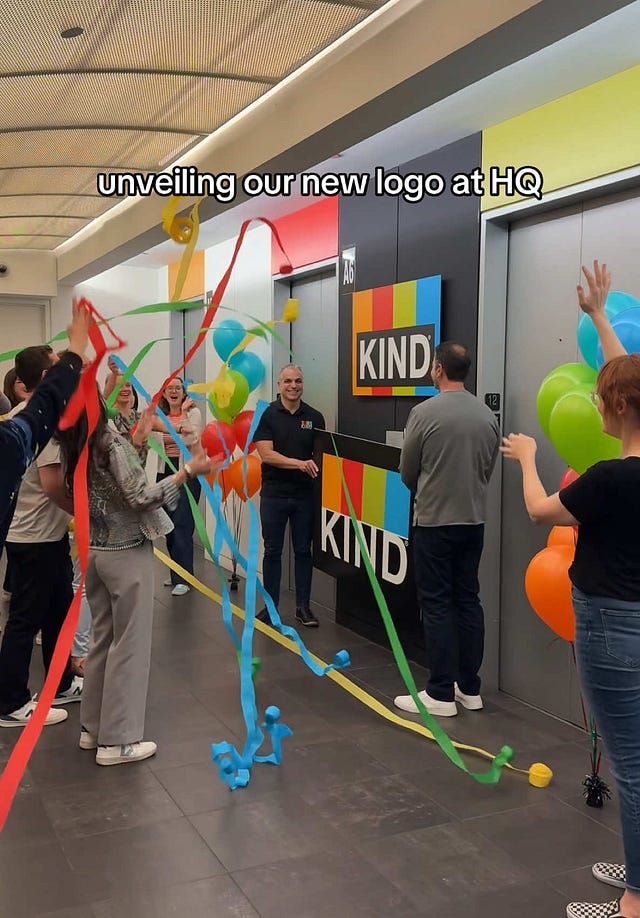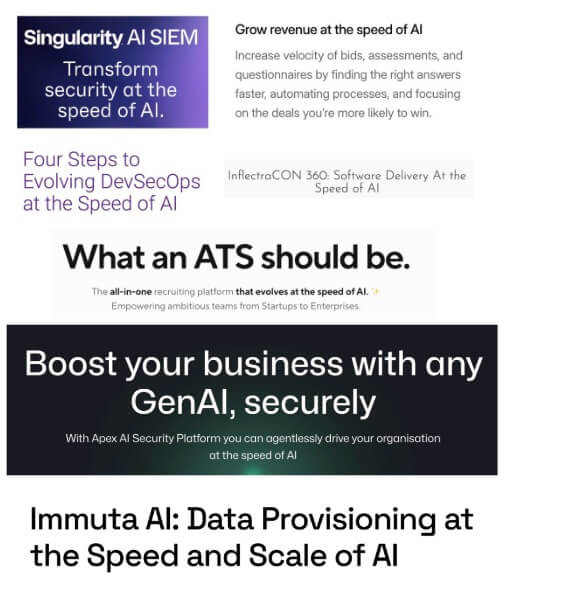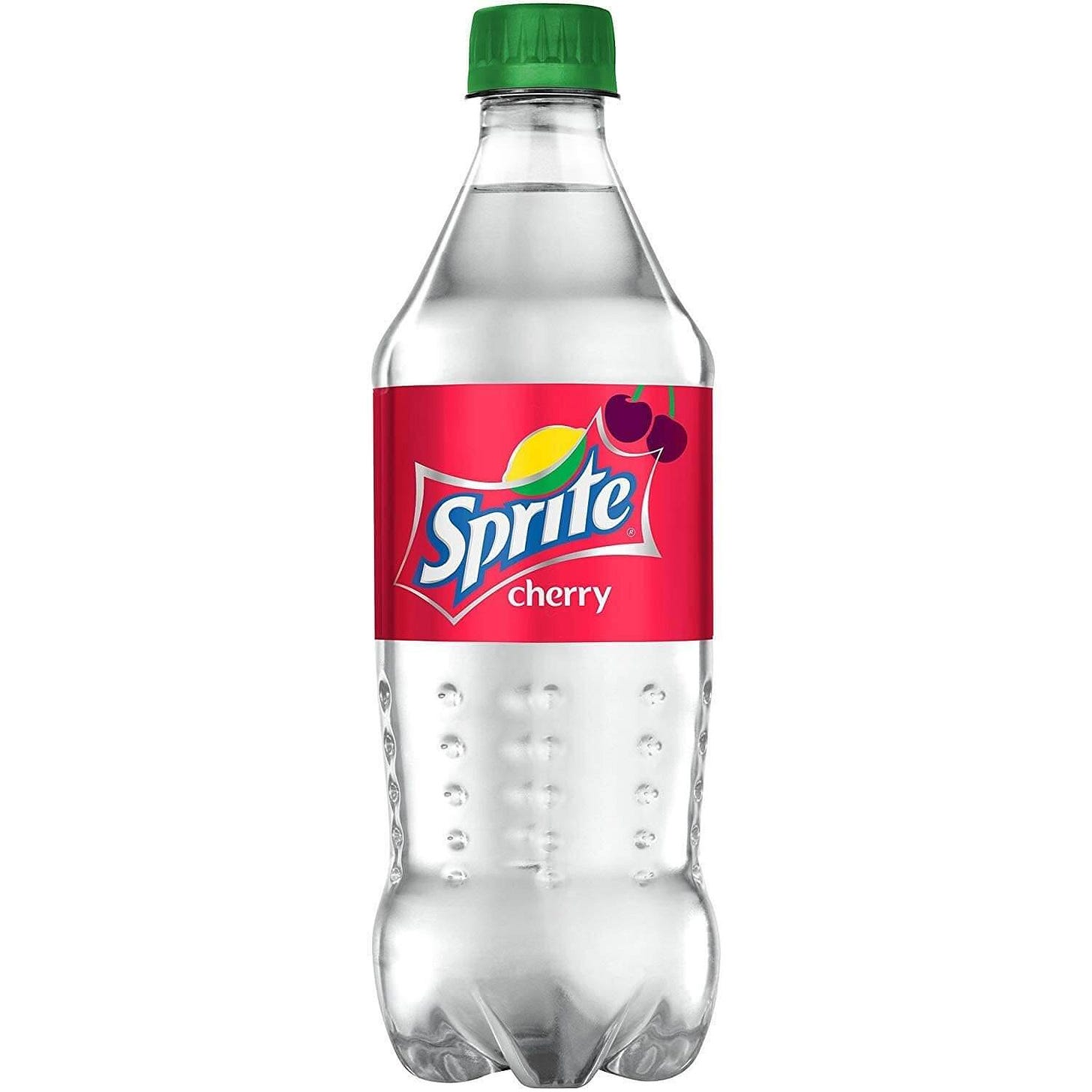"At the speed of AI" has played itself out at the, uh, speed of, uh...
And why is Chili's comparing itself to McDonald's?
Hello Gobbledeers,
How’s it going? How was your Memorial Day (US)? Good? Feels like it was 6 weeks ago even though it was 2 days ago? Weird, right?
Let’s jump in - today we’ve got:
Forced marketing fun
At the speed of AI
The greater fool theory of PR
2 stories of food being re-positioned successfully
Keeping the Same Kind of Logo Is Something to Cheer For
In our seminal piece about how to not get fired for changing your logo, we discussed several options for how you can change your logo and not have Internet trolls get angry with you:
If you have to change a logo, you can go from a serif font to a non-serif font to make it look “modern” even though I can’t tell you why it looks more modern.
If you have to change a logo, you can go from a non-serif font to a serif font, to make it look more serious and kinda enterprise-y (if that’s your new market).
If your font is in italics, you can remove the italics.
If you only have words in your logo, you can add a new element if you’d like.
We then shared that the safest way to change your logo is to change the weight of the font very slightly:
Nobody is firing you for that.*
(*Probably.)
A week or so ago KIND, the snack company, unveiled its new logo, and they discovered that there is another way to change your logo to ensure that you will still have a job afterwards: You can move the text very slightly (new version on the right):
Ta-da!
I wouldn’t be bothering to tell you about any of this, except…
Did you ever have to go to a work party, and the work party was a little awkward because it’s a work party, and now that I think about it, aren’t all work parties awkward? I definitely didn’t used to think that work parties were weird and awkward, but why is there a part of going to work that involves drinking with your coworkers and playing music? It always makes me think of this:
So obviously I’m telling you all of this because here’s a little TikTok of the world’s saddest logo unveiling. It’s not sad because of the logo - the logo is fine - but because a bunch of people in marketing had to get up from their desks, put on some music, throw streamers, and literally say, “woo” when this slight logo change was unveiled:
 Tiktok failed to load.
Tiktok failed to load.Enable 3rd party cookies or use another browser
“And the crowd goes wild.”
At the Speed of STFU
When you write all of your copy at the speed of AI, you end up with copy that sounds like it was written at the speed of AI, because it says that your software does what it does at the speed of AI, which everyone else is writing on their own websites, which will turn off your prospects…at the spee…Oh I can’t even write it.

OK, Fine, Maybe We Won’t Replace Workers with AI
In other news that’s changing at the spee—
A year or so ago, we wrote about a PR strategy employed (effectively, I argued) by Buy-Now-Pay-Later-IPO-Apparently-Never platform Klarna’s CMO and CEO: if you talk about how AI is being used to replace employees, it might make your (fingers crossed!) upcoming IPO more attractive to investors because it shows that you’re focused on using new tech to lower costs.
Klarna’s executives were in the press blabbering nonstop about “the company’s chatbot [that] does the work of 700 customer service agents” and using AI to build marketing creative so they save $10 million in marketing costs by using fewer photographers and so forth.
“We will use AI to replace some of the workers we have and keep us from hiring more workers” became the PR message of choice for enterprise tech companies for about a year. It showed that your CEO was taking AI seriously, and “taking AI seriously” meant that you were using it to reduce costs. The message resonated in the market. How do we know it resonated? Because nobody freaked out when a CEO said it publicly.
One thing, though, about messaging: there’s a greater fool element to it. Being the first to use a message can be very effective and powerful. Being one of the many people to use a message after the first can be perfectly OK, as it shows you’re at least not falling behind the times.
But at some point, you’re going to use a message that no longer resonates - or worse, causes backlash - except that you don’t know it yet (to wit, the Democrats in 2024, har).
Back in April, Shopify’s CEO became the penultimate fool in this game, when he sent a memo that he posted publicly saying, “Before asking for more headcount and resources, teams must demonstrate why they cannot get what they want done using AI.”
That message got twisted a bit in the press, with headlines like, “Shopify CEO Manifesto Says AI Now Mandatory For All Employees,” which is not exactly what he was saying, but close enough. And there certainly was not a huge backlash by Shopify users and employees.
And then, just a year after Klarna declared that they were cutting staff and saving money, their CEO told the company’s employees recently that replacing-humans-with-chatbots “isn’t the right fit any more…As cost unfortunately seems to have been a too predominant evaluation factor when organizing this, what you end up having is lower quality…Really investing in the quality of the human support is the way of the future for us.” (Echoing what I wrote last week about using AI for content - “it’s not bad, but it’s not good.”)
Huh. Interesting.
Also interesting from a marketing standpoint, as he also told his team, “From a brand perspective, [and] a company perspective I just think it’s so critical that you are clear to your customer that there will be always a human if you want.”
I give him a ton of credit - he saw that the message that “AI will replace workers and save money and make our company more valuable” had kinda reached full saturation, and shifting that message to “we care too much about our employees and customers to solely rely on AI” can be very effective. Well done.
Perhaps not everyone saw that article.
Specifically, Duolingo’s CEO may not have seen that article, which is why he likely felt comfortable posting a memo he sent to employees saying the company will “gradually stop using contractors to do work AI can handle,” “AI use will be part of what we evaluate in performance reviews,” and staff can only add new employees “if a team cannot automate more of their work.”
While that seems pretty similar to what Shopify’s CEO wrote, Duolingo’s CEO didn’t see that he was the greatest fool in this situation, which is to say: blowback by Duolingo’s users was swift and effective. I usually dismiss stories that say, “people are angry on social media” but in this case, the company’s customers were sufficiently pissed off that the CEO had to walk back what he said earlier, writing: “To be clear: I do not see AI as replacing what our employees do (we are in fact continuing to hire at the same speed as before).”
What I’m saying is this: If your PR strategy is to just say what everyone else is saying, don’t be the last one to say it.
The Most Successful Food Repositionings in Recent Memory
I’ve been sharing this definition of positioning that I made up, and it’s been resonating with people, in part because positioning is a bit misunderstood:
What is this thing, and in what ways is it better than the alternative (and for whom)?
I know there are books and books and books about positioning, and most/many/some of you have sat through multi-day positioning workshops, only to feel at the end like all you did was fill out a Mad Libs-style sheet (For ___, We are the ___ that ____, unlike ____ etc), that was never referenced again.
Having to go through one of this is sad, which is surprising because Mad Libs is great when you’re at camp and you’re 11. Though I guess it’s less great when you’re, uh, not 11 and at camp.
The shame, though, is that when my question above is answered well, it can transform your company. And I wanted to share 2 recent examples from the food world: Up first, Chili’s.
Yes, Chili’s.
Last year the CEO of Chili’s saw that inflation had driven the average price of a fast food meal from $7.50 in 2019 up to $12. And he recognized that this was an opportunity to reposition Chili’s from being a somewhat struggling chain where people got their baby back (etc) and was a casual, fun place where you can bring a date, to being an alternative to McDonald’s where the perceived value was much, much higher.
As the Wall Street Journal reported:
“Twice the beef of a Big Mac,” one Chili’s ad promised last spring, playing up Chili’s own burger deal starting at $10.99—not far off the average price of a large Big Mac meal at McDonald’s. Another touted the chain’s new Big Smasher’s superiority to “just some other burger at a drive-through.”
In short, they had 2 options:
Option 1: Continue trying to compete in the “fun place to go with a date” space, a crowded market that ranges from “let’s order in and watch Netflix” to “let’s go to a baseball game.” There are lots of ways to have fun with a date (my wife will attest).
Option 2: Make Chili’s a better version of a product that people already spend money on, and grab some of that market share. Hence, it’s superior to “some other burger at a drive-through.”
I’d also go with Option 2.
Lesson: If your product is in a crowded market where the value to customers isn’t clear, there may be another market to move into where the value will be clearer.
Example 2: Mocktails
The WSJ also recently wrote an article about why mocktails are suddenly $15. Their answer? “Nobody Knows Why.”
That’s not helpful. There are plenty of other newsletters you can read that will tell you they don’t know why something happened. No, I’m not that newsletter writer.
Why are mocktails suddenly $15 when they are, as a mocktail drinker in the article puts it, “literally a layer of grape juice and orange juice”?
Because they are not a mix of juice. They are an alternative to cocktails.
If you order a Diet Coke and your friend orders a gin & tonic, the Diet Coke is part of an established category, and that category can charge $4. If your friend orders a gin & tonic, and you order a “Strawberry Cucumber Fizz,” a non-alcoholic Fizz is more like a Spritz ($15) than like a Sprite ($4.)
Lesson: If your category has a ceiling on what you can charge, you need to reposition to a different category.
Thanks for reading to the end - it’s the best part.
Next week: A really great example of what to put at the top of your website.
P.S. - I loved this article about high school kids putting out a newspaper during the summer in the Hamptons.







I would love a date a Chili's!
Since we're talking about company logos undergoing the smallest of updates, have you seen the new Google logo? It's gone from distinct borders between each color section in the G, to gradients between each color section in the G. Truly groundbreaking stuff.
https://www.theverge.com/news/664958/google-g-logo-gradient-design-change